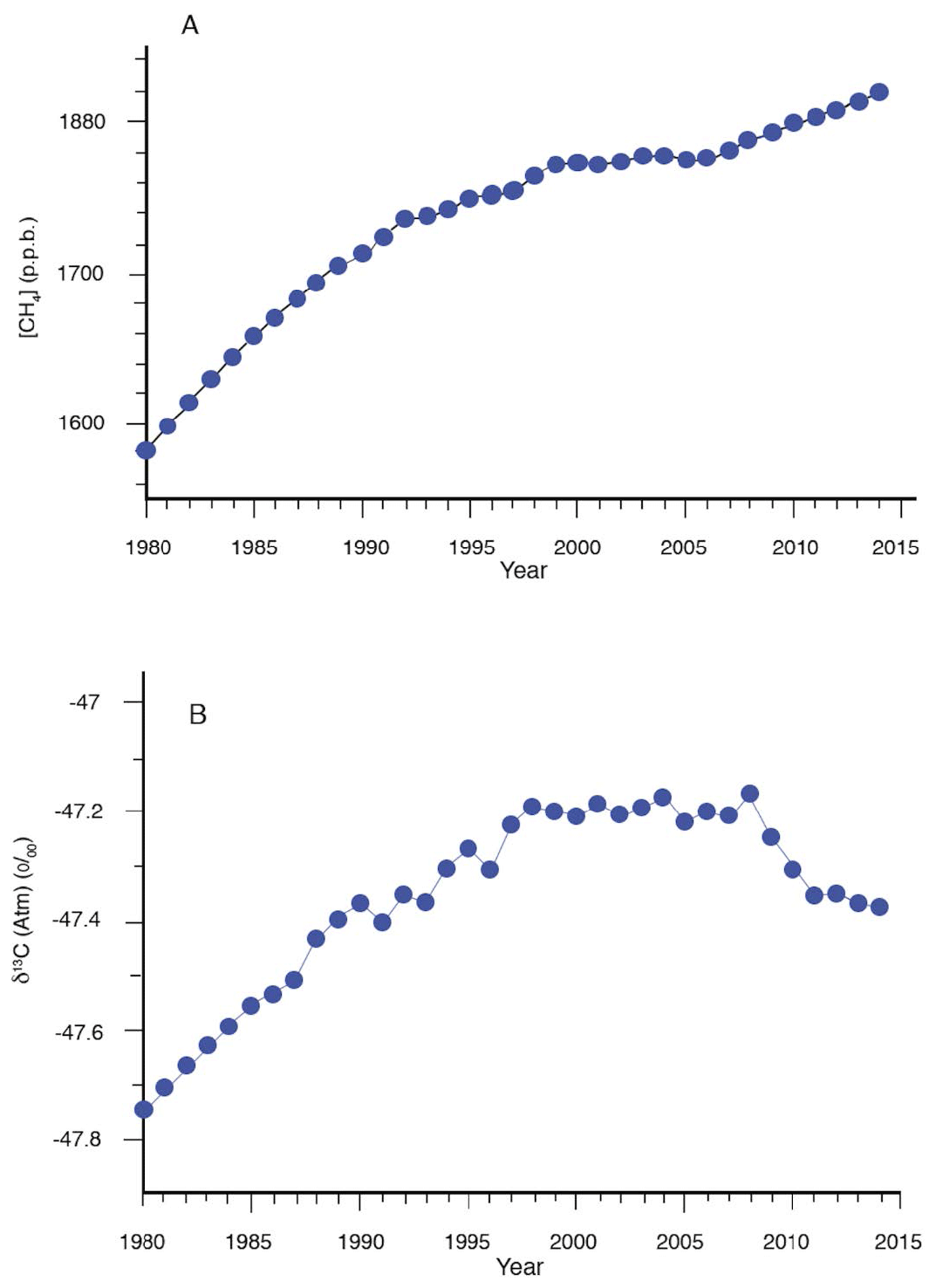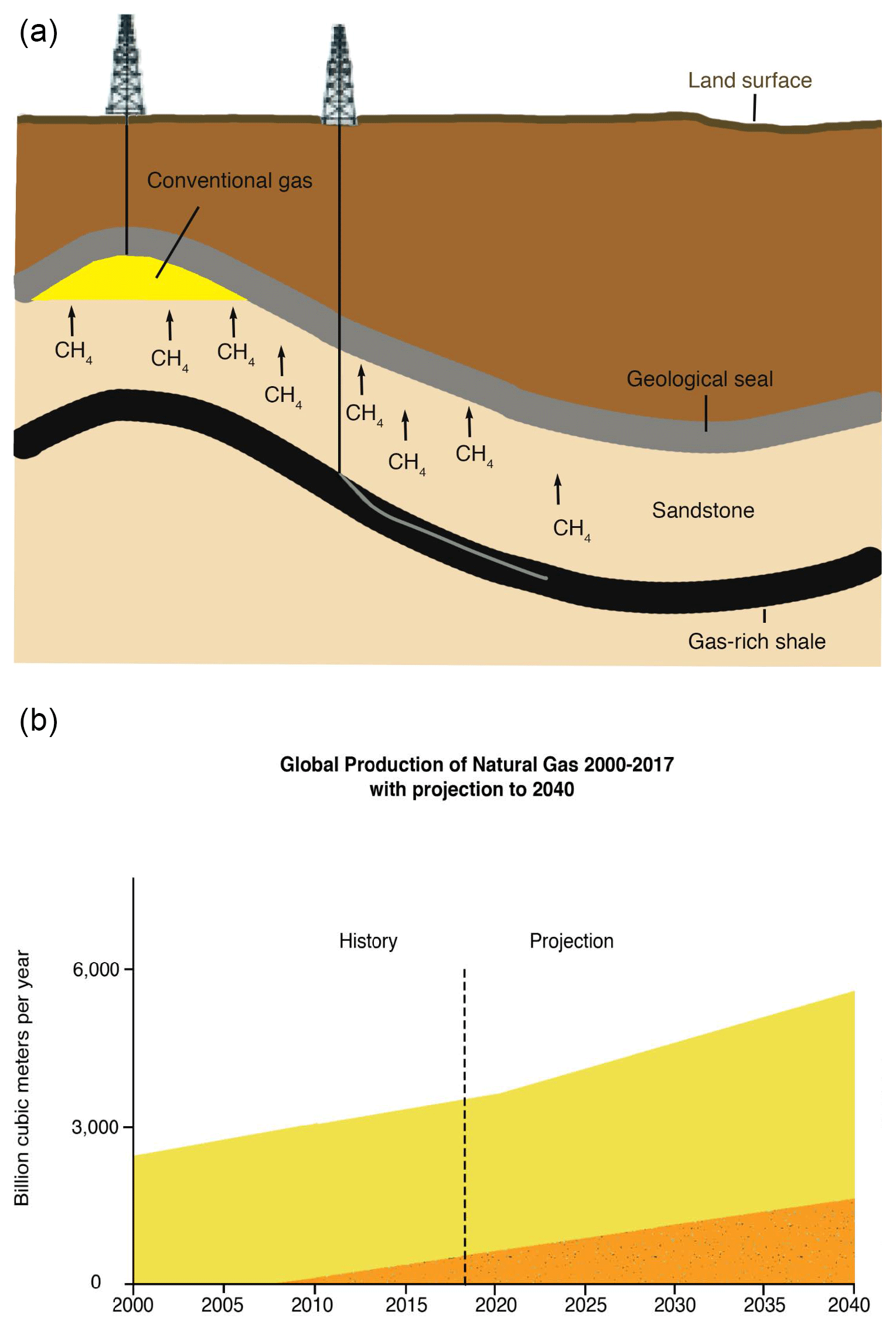So bad even the fossil fuel industry press is reporting it: Nick Cunningham, OilPrice.com, 18 August 2019, Shale’s Dark Side: Methane Emissions Are Soaring,

Figure 1 from
the study:
Methane emissions are rapidly rising since 2008, and carbon 13 signatures show it’s not cows, it’s not swamps, it’s not coal, which is crashing: it’s fracking.
A new study finds that shale oil and gas is behind the global rise in methane pollution over the past decade, a major source of greenhouse gas emissions.
The study, published in Biogeosciences, was able to separate methane emissions from conventional versus unconventional drilling, as well as methane from other “biogenic” sources, such as agriculture or wetlands. “This recent increase in methane is massive,” Robert W. Howarth of Cornell University, the author of the study, said in a statement. “It’s globally significant. It’s contributed to some of the increase in global warming we’ve seen and shale gas is a major player.”
Methane emissions rose in the late 20th century, and then leveled off in the early 2000s. “Since 2008, however, methane concentrations have again been rising rapidly,” Howarth wrote.
Howarth said that “chemical fingerprints” in the atmosphere point to shale oil and gas, as the methane from unconventional drilling has less carbon-13 relative to carbon-12, which distinguishes it from methane coming from conventional sources, including from gas and coal. Because two-thirds of all new natural gas production over the last decade has come from shale, and because the chemical composition of methane in the atmosphere has changed, Howarth concluded that shale gas is a key driver in the increase of methane.
That statement, a 14 August 2019 press release, New study: Fracking prompts global spike in atmospheric methane, also says it’s not cows and it’s not swamps:
Methane from biological sources such as cows and wetlands have a low carbon-13 content — compared to methane from most fossil fuels. Previous studies erroneously concluded that biological sources are the cause of the rising methane, Howarth said.
Also in that PR:
Unlike its slow response to carbon dioxide, the atmosphere responds quickly to changes in methane emissions. “Reducing methane now can provide an instant way to slow global warming and meet the United Nations’ target of keeping the planet well below a 2-degree Celsius average rise,” Howarth said, referring to the 2015 Paris Agreement that boosts the global response to climate change threats.
So when you see reports, for example also in OilPrice.com, that U.S. carbon dioxide (CO2) emissions slowed in 2019, remember that methane emissions, which are far worse, sped up. Because of fracking. Which needs to be stopped. Before methane in the air gets far worse, heating the world far more.

Figure 2 from
the study, illustrating the fracking process and projected methane emissions.
Methane leaks from wells, from pipelines, from compressor stations such as Sabal Trail is building right now at Dunnellon, FL, and Albany, GA, and from LNG export. Stop fracking, and pipelines and LNG export will fail with no fracking to drive them.
You can help, for example by contributing to the legal fund for the pending WWALS lawsuit against FERC for shirking its duty to oversee liquid natural gas (LNG) export facilities.
-jsq, John S. Quarterman, Suwannee RIVERKEEPER®
You can join this fun and work by becoming a WWALS member today!
Short Link:

![[WWALS LNG Export Map]](https://www.wwals.net/pictures/2018-10-31--lng-map/2018-10-31--WWALS-LNG-export-map.jpg)